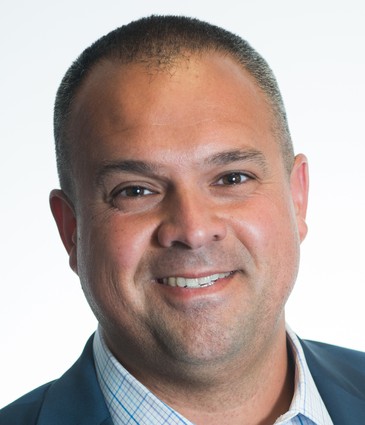“Standby Virtual Desktops” Give TetherView a Competitive Edge, CEO Michael Abboud Says

TetherView, a custom private-cloud company that moved into the Oceanport section of the former Fort Monmouth in 2015, has introduced a new service to help companies continue operating after being hacked, software failures, laptop mishaps or natural disasters.
The offering, called “Standby Virtual Desktops,” is a Desktop-as-a-Service (DaaS) solution.
When a user’s laptop is stolen or dropped, or is knocked out of service by a natural disaster, Standby Virtual Desktops enable the individual to resume working. It eliminates the concept of “disaster recovery. It allows you to transition into a business-as-usual mode,” said CEO Michael Abboud in an interview.
Abboud noted that the idea for the service came when TetherView was invited to bid on a large bank’s standby “cold site” for regular virtual desktops. The small company was competing against larger players. “We realized we needed to do something to give ourselves a real competitive edge. And that competitive edge was this idea of a standby virtual desktop.”
Cold sites, created for disaster-recovery operations, are often located in a facility that could be quite a distance away from the user. They are usually preconfigured and built for a client company seeking protection against business disruptions.
In contrast, Standby Virtual Desktop applications are delivered via TetherView’s private cloud for businesses, and they look and act like part of each customer’s corporate IT environment, though they are actually operating from ultra-secure data centers accessible via a Personal-Computer-over-Internet-Protocol (PCoIP) application or standard Web browsers, the company said in a release.
The entire infrastructure, including the servers, software, network and storage, is maintained by TetherView, eliminating the need to purchase and maintain a redundant system.
Abboud said that, as the DaaS service can be accessed from any device anywhere, it is a simple way to keep a business or an individual worker going in times of crisis. In the meantime, the business has breathing room and time to assess its IT situation and find a good solution to its problem. “We are not charging you extra when you use the standby mode. We recommend you do the sail over to Standby Virtual Desktops and do the right fix to your production environment.”
Even a small medical facility with redundant servers probably doesn’t have a good solution for individual employees who have to work after they’ve lost their laptops or the facility has been attacked by a hacker, he noted.
TetherView specializes in custom solutions for the cloud, and this offering is no exception, said Abboud. “We don’t have an out-of-the-box offering. We pride ourselves on doing a very thorough assessment on a per-client basis and making sure that the solution, at the end of the day, meets their needs. “
The new DaaS solution is a “gateway to the cloud” for a lot of businesses that are struggling to figure out how to take their first steps into the cloud. “By using the Standby Virtual Desktops from TetherView, they can dip their toes in the water, with something they might not feel is so mission critical,” Abboud said.
When TetherView starts a conversation with clients about employing Standby Virtual Desktops, this often leads to further conversations about backing up local production data, he noted.
“We build this to be competitive and reduce the cost of these cold sites that clients are building.” The real benefit for clients is that it helps them with compliance and security at a reasonable price. “Everything we do is for a flat fee, so it’s extremely affordable.”
TetherView’s client base is multinational, and includes companies and organizations of all different sectors and sizes in almost every industry, such as accounting, banking, law and healthcare, Abboud said. And he added that the company is growing rapidly.
For more on TetherView see: Catching Up with Michael Abboud, CEO of Oceanport-based TetherView

